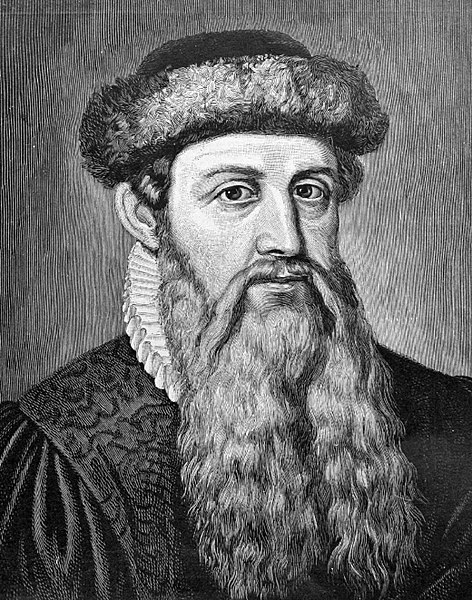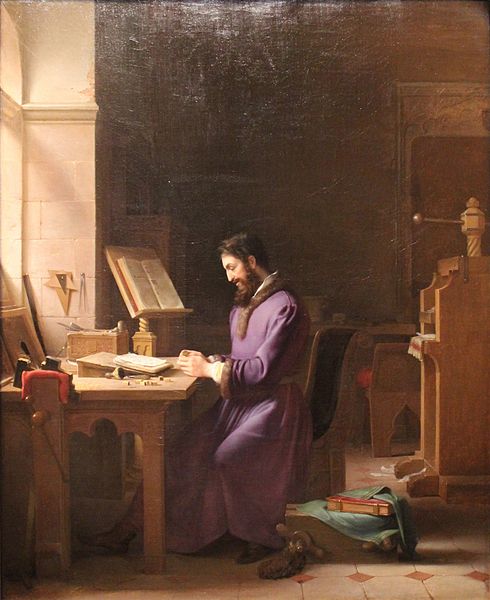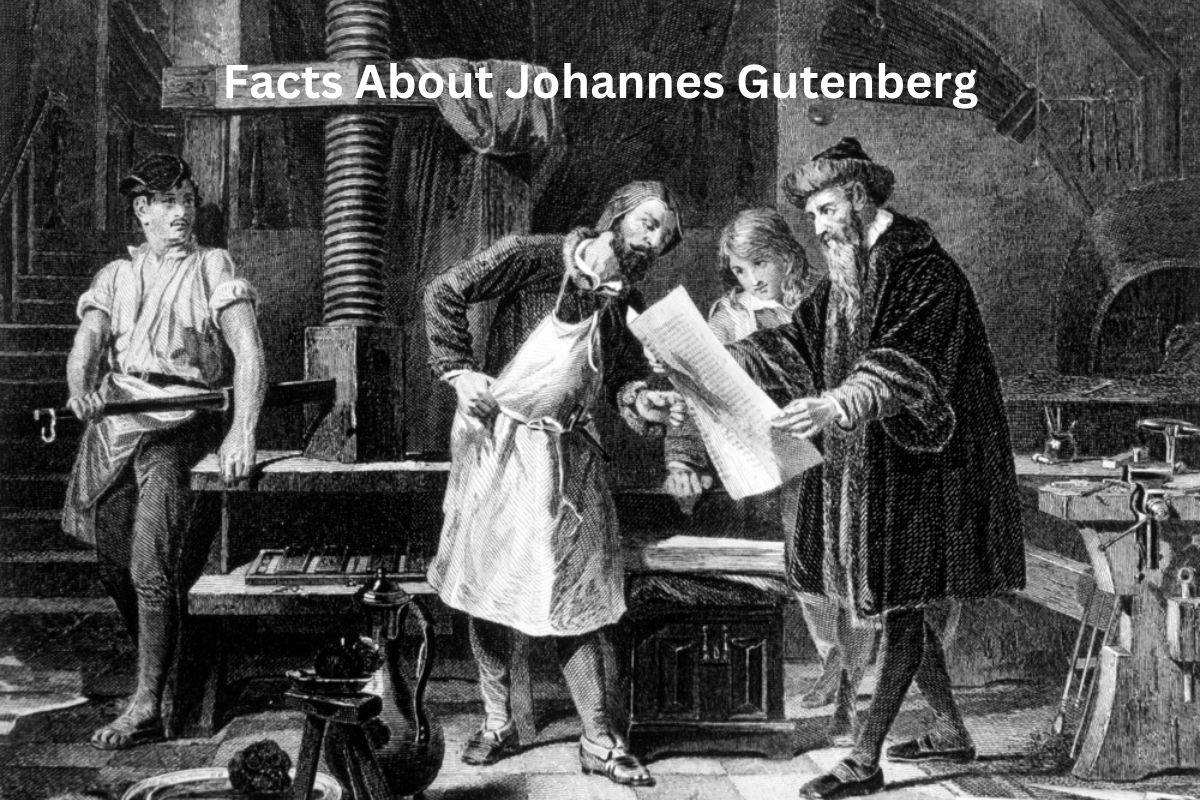Johannes Gutenberg (c. 1400 – February 3, 1468) was a German inventor and blacksmith best known for his groundbreaking invention of the mechanical movable-type printing press around 1440.
Born in Mainz, Germany, Gutenberg’s invention revolutionized the production of books by using individual metal type pieces for characters, allowing for the mass production of printed materials.
His most famous work, the Gutenberg Bible, printed around 1455, is considered one of the earliest major books printed using this technology.
Although he faced financial difficulties during his lifetime and lost control of his press, his invention had a profound and lasting impact on knowledge dissemination, literacy, and the spread of ideas during the Renaissance and beyond.
Gutenberg’s printing press remains a symbol of the transformative power of technology in communication and education.
Johannes Gutenberg Facts
1. Born in Mainz, Germany, around 1400
Johannes Gutenberg was born in the city of Mainz, which is located in modern-day Germany. While his exact birthdate is not known, it is believed to have been around the year 1400.
Also Read: Printing Press Timeline
Mainz was a bustling center of trade and culture during the 15th century, and this environment likely influenced Gutenberg’s later work in printing and invention.

2. Invented the printing press with movable type around 1440
Gutenberg’s most significant achievement was the invention of the mechanical movable-type printing press. Prior to this invention, books and documents were painstakingly copied by hand, making them rare and expensive.
Also Read: Accomplishments of Johannes Gutenberg
Gutenberg’s press revolutionized the process by using individual metal type pieces that could be rearranged and reused for different pages and books. This breakthrough significantly reduced the time and cost of producing books and made them more widely accessible.
3. Famous for the Gutenberg Bible, printed around 1455
One of the most famous works printed using Gutenberg’s press is the Gutenberg Bible, also known as the 42-line Bible or the Mazarin Bible.
It was completed around 1455 and is considered one of the earliest major books produced using movable type. The Gutenberg Bible was a remarkable achievement in its time, with each copy consisting of two volumes, each containing 1,286 pages.
It had a profound impact on the dissemination of religious texts and knowledge throughout Europe and is highly sought after by collectors today. Only a limited number of copies have survived to the present day.
4. Metal type used in his press for individual characters
One of Gutenberg’s key innovations in the printing process was the use of metal type for individual characters, letters, and symbols.
Each character was cast in metal, typically from an alloy of lead, antimony, and tin. These metal type pieces could be arranged, inked, and pressed onto paper or parchment to create text.
This method allowed for greater precision and efficiency compared to earlier methods that relied on hand-carved wooden blocks or plates.
Gutenberg’s use of metal type made it easier to reproduce large volumes of text accurately and quickly, which was crucial to the success of his printing press.

5. Revolutionized knowledge dissemination and literacy
Gutenberg’s invention of the printing press had a profound impact on knowledge dissemination and literacy. Before the press, books were scarce, expensive, and typically only accessible to the elite.
The mass production of books made possible by Gutenberg’s press democratized access to information. As books became more affordable and widely available, literacy rates began to rise, and people from various social backgrounds gained the opportunity to educate themselves.
This cultural shift contributed to the intellectual and cultural developments of the Renaissance and beyond, as more individuals had access to a wealth of knowledge.
6. Faced financial difficulties during his life
Despite his groundbreaking invention and contributions to the world of printing, Gutenberg faced significant financial challenges during his lifetime.
The process of developing and refining his printing press technology was expensive. Gutenberg borrowed money to fund his endeavors, and some of his business partners and creditors pressed legal claims against him.
As a result, he struggled with financial instability and, at one point, lost control of his printing press and workshop. These financial difficulties highlight the challenges Gutenberg faced in bringing his innovative ideas to fruition and the complex financial landscape of his time.
7. Lost his printing press and wealth due to financial troubles
Gutenberg’s financial difficulties took a toll on his life’s work. In 1455, after facing mounting debts, he was involved in a legal dispute with his business partner, Johann Fust, who had provided Gutenberg with the funds to continue his printing endeavors.
Fust eventually won the lawsuit, and as a result, Gutenberg lost control of his printing press and workshop. This setback meant that Gutenberg was unable to fully benefit from the success of his invention, and he faced personal financial hardship.

8. His invention played a pivotal role in the Renaissance
Despite his personal challenges, Gutenberg’s invention of the printing press had a profound and lasting impact on the Renaissance.
The spread of printed materials, including classical texts, scientific works, and religious documents, helped spark a cultural and intellectual revival across Europe.
The Renaissance, which began in the 14th century and continued into the 17th century, was characterized by advancements in art, science, literature, and philosophy. Gutenberg’s printing press was instrumental in making these ideas and innovations accessible to a wider audience, fostering an era of enlightenment and exploration.
9. Died in Mainz on February 3, 1468
Johannes Gutenberg passed away in his hometown of Mainz, Germany, on February 3, 1468. Although Gutenberg may not have lived to see the full extent of his invention’s impact, his legacy continued to grow in the centuries that followed.
His contributions to the world of printing and publishing are celebrated today as a testament to the power of innovation and communication.
10. His printing press had a profound and lasting impact on communication
Johannes Gutenberg’s invention of the printing press remains one of the most significant developments in the history of communication. It transformed the way information was disseminated, making books more widely accessible and affordable.
This accessibility, in turn, contributed to the spread of knowledge, the Reformation, the scientific revolution, and the democratization of education.
Gutenberg’s press laid the foundation for modern publishing and mass media, shaping the course of human history and influencing the way we share and consume information in the digital age.
